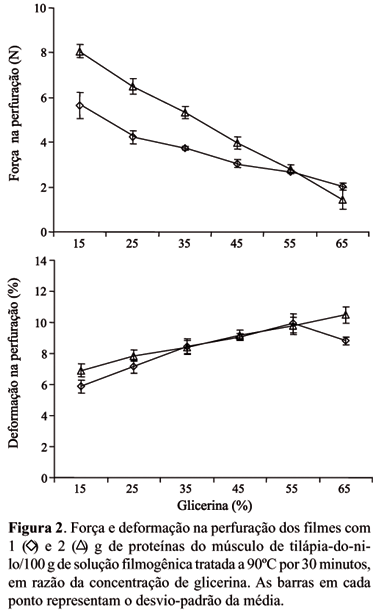The use of sarcoplasmic proteins with myofibrilar proteins might be an interesting alternative in edible films technology, because it would eliminate the muscle washing step during protein extraction. The aim of this work was to study physical properties of films based on muscle proteins, constituted by myofibrilar and sarcoplasmic proteins, from Nile Tilapia (Oreochromis niloticus), as influenced by the protein concentration and the plasticizer content of the filmogenic solution. The films were made from filmogenic solutions with 1 or 2 g of proteins/100 g of solution and 15 to 65 g of glycerin/100 g of proteins, with the pH maintained at 2.7 (acetic acid), thermal treated at 90° C for 30 min, and dehydrated at 30° C for about 24 hours. Films made from solutions with higher protein concentration were more colored, more resistant to puncture and strain, with higher elongation capacity under strain and visibly more opaque, although significant difference was not found for this last property. The viscoelastic properties and the puncture deformation were not influenced by protein concentration. All properties were affected by the plasticizer content.
myofibrillar proteins; sarcoplasmic proteins; colour; mechanical properties; viscoelasticity






